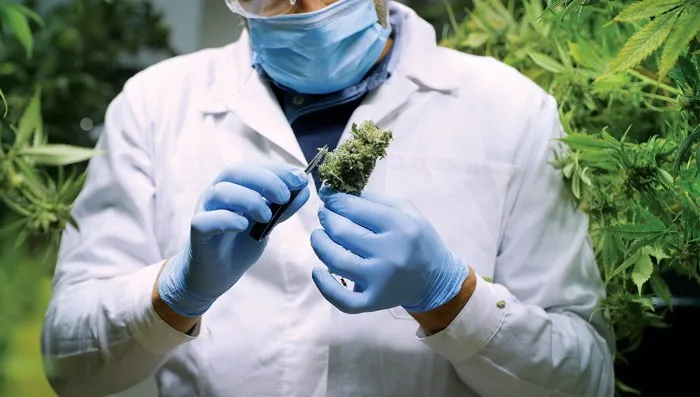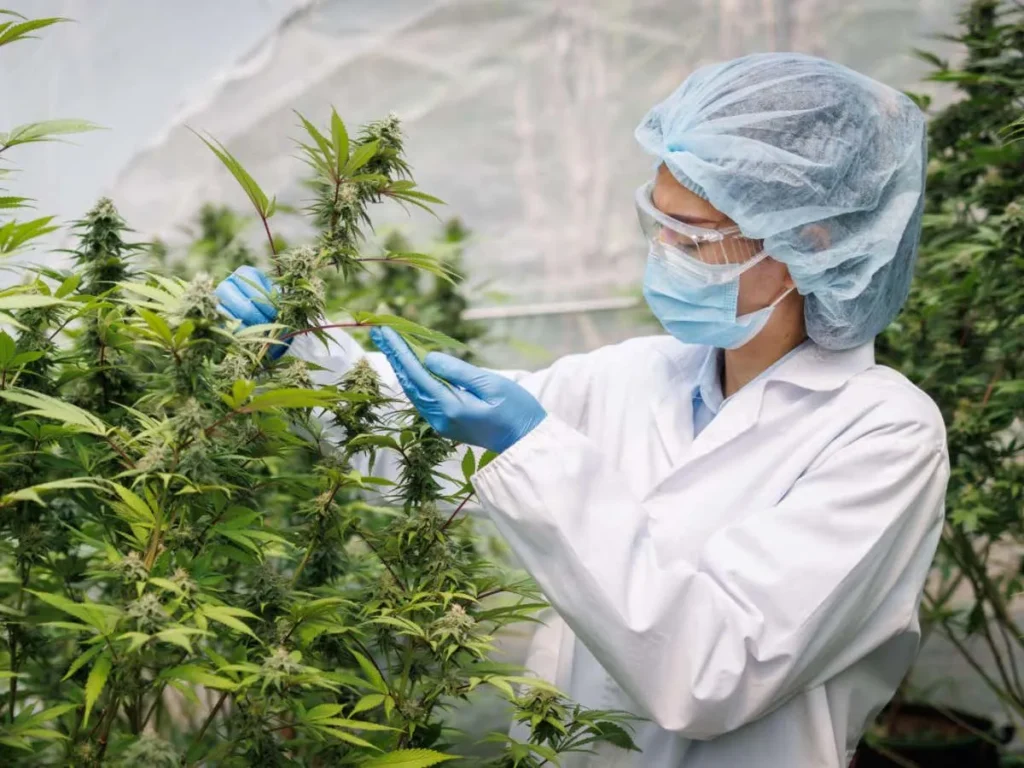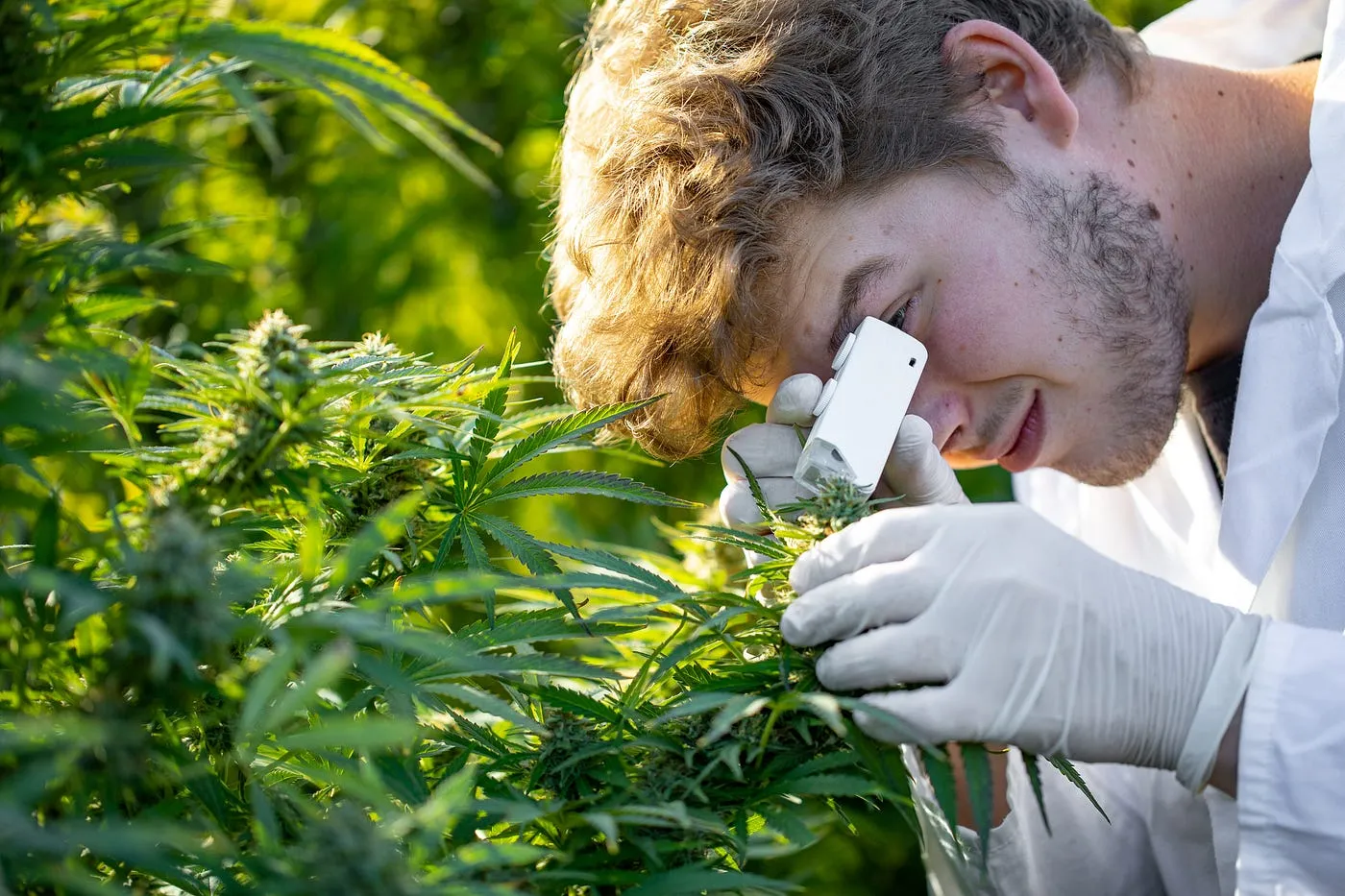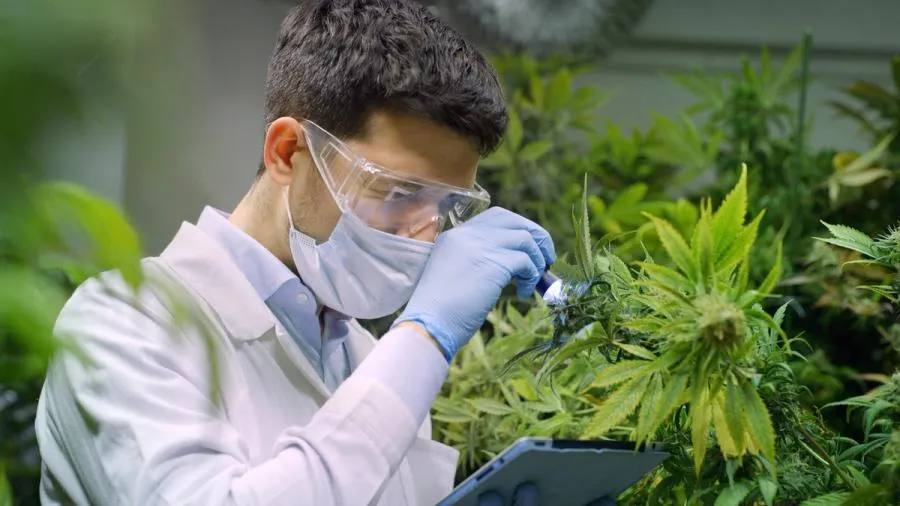Introduction
Cannabis has been a hot topic lately, and for good reason. Over the past few years, research into the plant has exploded, thanks to changes in laws and growing public interest. What was once seen as a controversial drug is now being looked at from a whole new perspective—especially in the world of science. From medical benefits to potential risks, cannabis is getting a lot of attention from researchers worldwide. So, what’s the latest scoop?
First off, cannabis is no longer just about getting “high.” With more countries and states legalizing its use, both medically and recreationally, scientists now have the freedom to study it more closely than ever before. This has opened up new doors to understanding what cannabis can really do. We’re talking about everything from pain relief to anxiety treatment and even its role in managing serious illnesses like epilepsy and cancer.
One of the biggest shifts in recent cannabis research is the focus on two of its primary compounds: THC (the part that makes you feel high) and CBD (which doesn’t get you high but is believed to have a bunch of health benefits). CBD, in particular, has been the darling of recent scientific studies because of its potential to treat conditions like chronic pain, epilepsy, and anxiety without the psychoactive effects of THC.
But cannabis isn’t just about the good stuff. Researchers are also digging into its risks. Long-term use, especially of high-THC strains, has raised questions about possible addiction, mental health impacts, and even effects on cognitive function, like memory and learning. And with more people using cannabis now than ever before, these concerns are pretty important.
The best part? We’re still just scratching the surface. Cannabis research is still in its early stages, and new studies are being published all the time. From understanding its medicinal benefits to its social and health impacts, the world of cannabis research is growing fast. Whether you’re a curious newcomer or a long-time user, this latest wave of scientific exploration is helping us better understand how this plant fits into our lives—both the good and the not-so-good. And as more research rolls out, it’s changing the way we think about cannabis, one study at a time.

The Evolution of Cannabis Research
Historical Context: The Early Days of Cannabis
For a long time, cannabis was used in traditional medicine, but modern scientific study was severely limited by legal restrictions. Its recreational use and the stigma attached to it made it hard for researchers to explore its true potential. Despite historical records of cannabis being used for various ailments, its classification as an illegal drug in most countries meant that any meaningful research into its medicinal properties was stifled for decades.
How Legalization Sparked a Research Boom
The tide began to turn when more countries and U.S. states started legalizing cannabis for medical and recreational purposes. This wave of legalization didn’t just make it easier for people to access cannabis—it also lifted the barriers that were holding back scientific research. Suddenly, researchers had the funding, the plant materials, and the legal clearance to conduct real studies. As a result, the last decade has seen a massive increase in cannabis-related research, ranging from its medical benefits to its societal impacts.
Breaking Old Stereotypes with Modern Science
With more freedom to study cannabis, scientists are revealing just how versatile this plant is. No longer is it only about its psychoactive effects; researchers are now diving into its potential to treat chronic pain, mental health disorders, and even cancer. This modern wave of research is debunking outdated views and offering a more nuanced understanding of the plant’s capabilities.
Global Collaboration Drives Discovery
One of the major upsides of the recent legalization trend is the increased collaboration between countries. Researchers from places like the U.S., Canada, Israel, and Europe are sharing data, which has led to a richer and more comprehensive body of research. This international teamwork has been crucial in expanding our knowledge of cannabis and speeding up discoveries that could lead to new treatments.
Balancing Benefits with Risks
While much of the recent research highlights the potential health benefits of cannabis, scientists are also digging into the risks. With the rise in availability of high-THC strains, there are growing concerns about addiction and long-term brain health. Cannabis isn’t without its downsides, and researchers are working to better understand how to balance the positives with the potential negatives, ensuring safe use for both medical and recreational users.
Therapeutic Uses of Cannabis
Cannabis for Pain Management
One of the most widely studied areas of cannabis research is its potential to relieve pain. Chronic pain, particularly from conditions like arthritis, neuropathy, and multiple sclerosis, has long been a difficult issue to treat with traditional medications. Recent studies suggest that cannabis, particularly its cannabinoids like THC and CBD, may offer an alternative. These compounds interact with the body’s endocannabinoid system, which plays a role in regulating pain. In fact, many patients report significant relief from chronic pain when using cannabis, especially when compared to opioids, which come with a higher risk of addiction and dangerous side effects.
Cannabis and Mental Health: Anxiety and Depression
The relationship between cannabis and mental health is complex, but new research is starting to shed some light on how it can help—or harm—conditions like anxiety and depression. Low doses of CBD, for instance, have been shown to reduce anxiety levels in some individuals. However, THC can have the opposite effect, with higher doses potentially leading to increased anxiety or paranoia. For people dealing with depression, cannabis may offer temporary relief from symptoms, but long-term effects are still being explored. Overall, the impact of cannabis on mental health depends heavily on the dosage, strain, and the individual using it, making it a topic that requires further research.
Cannabis for Epilepsy and Seizure Control
Perhaps one of the most significant breakthroughs in recent cannabis research is its use in treating epilepsy. In particular, a form of CBD has been shown to drastically reduce seizures in patients with certain rare forms of epilepsy, such as Dravet syndrome and Lennox-Gastaut syndrome. The success of cannabis in this area even led to the FDA approving the first cannabis-derived drug, Epidiolex, which has been a game-changer for patients who didn’t respond to traditional treatments. This has been a major milestone for cannabis as a legitimate medical treatment, and ongoing research aims to expand its use for other seizure-related disorders.

Cannabis and Sleep Disorders
For people struggling with insomnia or other sleep disorders, cannabis has shown promise as a natural alternative to pharmaceutical sleep aids. Studies suggest that certain strains of cannabis, particularly those high in CBD and lower in THC, can help promote relaxation and improve sleep quality. THC, on the other hand, may help users fall asleep faster, but it can also reduce REM sleep, which is important for overall sleep health. As a result, researchers are focusing on understanding which strains and dosages are best suited for treating sleep issues without compromising the quality of sleep.
Cannabis in Cancer Treatment: Symptom Relief and Beyond
Cannabis is also being studied for its potential role in cancer treatment, particularly when it comes to managing symptoms related to chemotherapy. Many cancer patients use cannabis to help reduce nausea, vomiting, and pain associated with cancer treatments, and early research suggests that cannabinoids could be effective in these areas. In addition to symptom relief, there’s growing interest in the idea that cannabis might have antitumor properties. While this research is still in its early stages, some laboratory studies suggest that cannabinoids may help slow the growth of certain types of cancer cells. However, more clinical trials are needed to fully understand its potential in this field.
Potential Risks and Side Effects of Cannabis
Cognitive Impairment and Memory Issues
One of the most well-known side effects of cannabis, particularly high-THC strains, is its impact on cognitive function. Studies show that regular cannabis use, especially in younger individuals whose brains are still developing, can lead to issues with memory, attention, and learning. THC, the psychoactive compound in cannabis, interacts with the brain’s hippocampus, which is involved in memory formation. This can result in short-term memory lapses and, in some cases, long-term cognitive effects. While occasional use is less likely to cause lasting harm, heavy and prolonged cannabis use has been associated with more significant memory and learning difficulties, particularly in adolescents and young adults.
Mental Health Concerns: Anxiety, Paranoia, and Psychosis
While cannabis can help some people manage anxiety, it can also have the opposite effect, especially at higher doses. THC is known to cause heightened anxiety, paranoia, and, in extreme cases, even psychotic episodes. Individuals who are genetically predisposed to mental health conditions, such as schizophrenia or bipolar disorder, may be at a higher risk of experiencing these adverse effects. Research has shown that heavy cannabis use can increase the likelihood of developing psychosis, especially in younger users or those with a family history of mental illness. These findings have raised concerns about the widespread use of high-THC cannabis products, prompting calls for more research into the mental health impacts of cannabis.
Addiction and Cannabis Use Disorder
Contrary to popular belief, cannabis is not entirely free from the risk of addiction. While it’s often viewed as less addictive than substances like nicotine or opioids, regular cannabis use can lead to dependency in some individuals. This condition, known as Cannabis Use Disorder (CUD), is characterized by cravings, withdrawal symptoms, and difficulty controlling usage. People who begin using cannabis at a young age, or those who use high-THC strains frequently, are more likely to develop CUD. Symptoms of cannabis withdrawal, such as irritability, insomnia, and loss of appetite, can make it difficult for heavy users to quit or cut back.

Respiratory Issues from Smoking
For those who smoke cannabis, the impact on lung health is another concern. Just like tobacco, inhaling cannabis smoke introduces harmful chemicals into the lungs. Long-term smoking can lead to chronic bronchitis, coughing, and other respiratory issues. However, the risk of developing lung cancer from cannabis smoking remains unclear, with studies providing mixed results. Some research suggests that smoking cannabis may not be as damaging as tobacco, but it’s still important to recognize the risks associated with regular inhalation. As a result, many users are turning to alternatives like vaping, edibles, or tinctures to avoid the harmful effects of smoke on their lungs.
Impacts on Driving and Motor Skills
One of the most immediate risks of cannabis use is its effect on motor skills and reaction time. THC impairs coordination and judgment, making activities like driving dangerous. Studies have shown that drivers under the influence of cannabis are more likely to be involved in accidents, as THC slows reaction times and affects decision-making. Even though cannabis doesn’t impair users in the same way alcohol does, the effects on driving can still be significant. With more people using cannabis recreationally, especially in places where it’s legal, the risk of impaired driving has become a growing public safety concern.
Impact on Pregnancy and Developing Babies
There’s growing evidence that cannabis use during pregnancy can negatively affect fetal development. THC can cross the placenta, potentially impacting the developing brain of the fetus. Studies suggest that babies born to mothers who use cannabis during pregnancy may have lower birth weights and could be at higher risk for developmental issues as they grow. There is also concern that cannabis use during breastfeeding may pass THC to the baby through breast milk, leading to further developmental concerns. As such, most medical professionals advise against cannabis use during pregnancy and breastfeeding.
Future Directions in Cannabis Research
The Role of Cannabinoids Beyond THC and CBD
While THC and CBD are the most well-known cannabinoids in cannabis, they are just two of over 100 compounds found in the plant. Scientists are now turning their attention to lesser-known cannabinoids like CBG (cannabigerol), CBN (cannabinol), and THCV (tetrahydrocannabivarin) to explore their potential therapeutic benefits. These minor cannabinoids could have unique effects on the body, offering treatments for conditions that THC and CBD alone can’t address. For example, early research suggests that CBG might have anti-inflammatory and antibacterial properties, while THCV is being studied for its potential to reduce appetite and regulate blood sugar in people with diabetes. As research on these compounds expands, we may see a broader range of cannabis-based treatments in the future.

Cannabis and Personalized Medicine
The concept of personalized medicine is gaining traction in the medical world, and cannabis research is no exception. Different people react to cannabis in unique ways based on their genetics, metabolism, and overall health. What works for one person might not work for another, and this is where personalized cannabis medicine comes into play. Researchers are working on ways to tailor cannabis treatments to individual needs, taking into account factors like a person’s specific medical condition, their body’s response to different cannabinoids, and even their genetic makeup. In the future, we might see cannabis prescriptions that are as individualized as other forms of medication, providing more effective and safer treatments.
Exploring Cannabis as an Alternative to Opioids
With the opioid crisis continuing to impact communities around the world, researchers are exploring whether cannabis could be a safer alternative for managing pain. Opioid medications, while effective for pain relief, come with high risks of addiction, overdose, and death. Cannabis, particularly strains high in CBD and lower in THC, may offer pain relief without the same level of risk. Some studies suggest that patients who use cannabis for chronic pain are able to reduce their reliance on opioids or avoid them altogether. This potential shift from opioids to cannabis as a primary pain management tool could have a huge impact on how doctors treat chronic pain, but more research is needed to fully understand how effective and safe cannabis is in this role.
Advancements in Cannabis Delivery Methods
As cannabis research evolves, so do the ways it’s consumed. Traditional methods like smoking and edibles are now being complemented by more advanced delivery systems such as transdermal patches, sublingual sprays, and even cannabis-infused beverages. These new methods offer more controlled dosages and quicker onset times, making it easier for patients to manage their symptoms without the guesswork involved in traditional consumption. Researchers are particularly interested in developing delivery systems that provide the medical benefits of cannabis without the psychoactive effects of THC, which could make cannabis treatments more appealing and accessible to a wider range of patients.
Cannabis and Neuroprotection: Alzheimer’s and Parkinson’s
Another exciting area of research is cannabis’s potential role in protecting the brain from neurodegenerative diseases like Alzheimer’s and Parkinson’s. Early studies suggest that cannabinoids, especially CBD, may have neuroprotective properties that help reduce inflammation and oxidative stress in the brain. This could slow down the progression of these diseases and improve the quality of life for patients. While the research is still in its infancy, the idea of using cannabis to combat brain degeneration is gaining traction. Clinical trials are underway to explore how cannabinoids can be used to protect and even repair brain cells, offering hope for new treatments in the future.
The Global Shift Toward Cannabis Legalization and Research
The wave of cannabis legalization, especially in countries like Canada, parts of the U.S., and Uruguay, has opened the door for more research across the globe. As more countries relax their cannabis laws, researchers have greater access to the plant and the ability to study its effects in a more controlled, legal environment. This global shift is not only advancing our understanding of cannabis but also creating new opportunities for international collaboration. Countries with long histories of cannabis use, such as Israel, are leading the way in medical cannabis research, while others are catching up. The more that cannabis is legalized and regulated, the more research can flourish, leading to faster breakthroughs and discoveries.
Conclusion: The Road Ahead for Cannabis Research
The journey of cannabis research has come a long way, but it’s clear that we’ve only scratched the surface of what this remarkable plant can offer. From exploring cannabinoids beyond THC and CBD to unlocking the potential for cannabis to replace opioids in pain management, the possibilities are vast and exciting. However, the path forward is not without its challenges. Legal barriers, regulatory hurdles, and the need for more standardized testing continue to complicate the research landscape.
Despite these obstacles, the future of cannabis research looks promising. As more countries legalize cannabis and embrace scientific inquiry, researchers will have more freedom to conduct large-scale studies and develop innovative treatments. The global shift in attitudes toward cannabis, combined with advancements in personalized medicine and new delivery methods, suggests that cannabis will play an increasingly important role in both healthcare and wellness.
Ultimately, the ongoing research will help us better understand how cannabis works in the body, its medical benefits, and its risks, paving the way for more effective, safe, and accessible treatments. Whether it’s through breakthroughs in neuroprotection, pain management, or personalized therapies, the future of cannabis research holds immense potential for improving lives.

